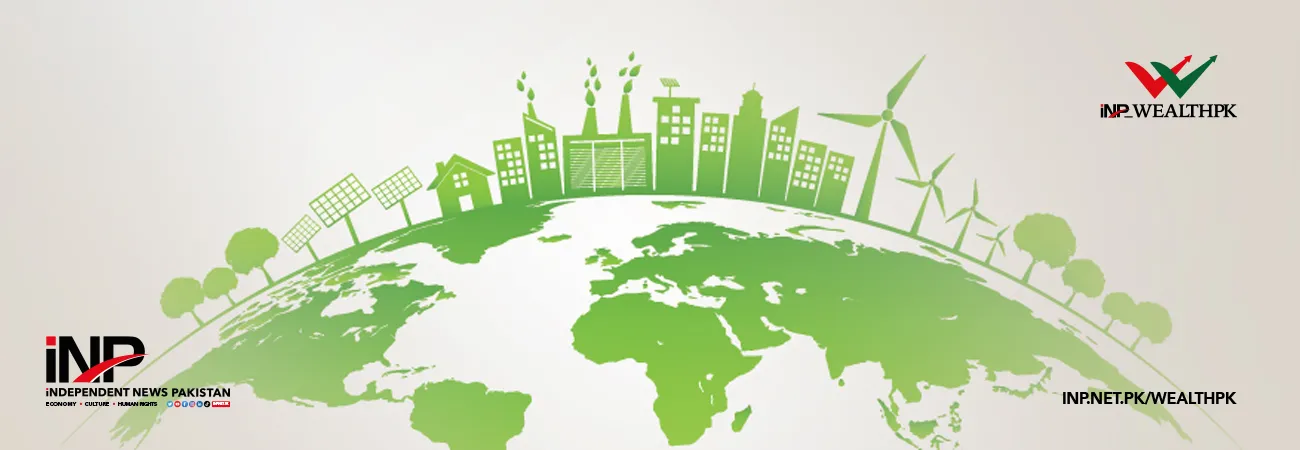INP-WealthPk
By Samia Khalid
ISLAMABAD, Oct 27 (INP-WealthPK)- Foreign Direct Investment (FDI) flowing into Pakistan during FY21-22 (July-Aug) is recorded at $203.1 million.
Power generation, construction, and trade remained the favourites of foreign investors during FY2020-21 and foreign exchange inflows kept growing, indicating that Pakistan had already started to recover from the pandemic.
China-Pakistan Economic Corridor (CPEC) has played a significant role in strengthening Pakistan's infrastructure, notably in the energy, telecommunications, and transportation sectors, and it is all set to boost Pakistan's technical capability.
FDI is important for a country's economic growth, as it boosts the host country's GDP and expands job opportunities by increasing aggregate productivity and allowing the transfer of technology, skills, and effective business management practices.
More importantly, Pakistan requires significantly more non-debt-creating, longer-term FDI inflows to help it deal with its perilous balance-of-payments situation.
Pakistan received FDI inflows of $5.6 billion and $5.4 billion in 2007 and 2008, respectively. These inflows were mostly in the telecommunications, power production, and financial sectors. However, that momentum could not be maintained due to the domestic issues.
 During the year 2019-20, FDI inflows into Pakistan grew to $2.56 billion, which was up almost $1.36 billion from the previous year 2018-19. But unfortunately, during the fiscal year 2020-21, there was a substantial decline in FDI inflows and we received only $1.85 billion. There are several reasons for this, particularly a weak economic structure and fast-changing geopolitical dynamics. These two main factors, combined with the COVID-19 pandemic that have caused the recession in many economies, including Pakistan.
FDI is important for Pakistan because increased and sustained FDI inflow can reduce its reliance on foreign borrowing to finance its trade imbalance. Moreover, the periodic exchange rate volatility that puts the domestic currency under strain may be alleviated by attracting more FDI.
Sector-wise FDI inflows indicate that Pakistan effectively handled the economic impact of the COVID-19 pandemic.
Pakistan’s economy has already started to recover, and power generation, construction, and trade remain attrative for FDI as the inflows into these sectors kept growing and were recorded $906.1 million, $30.9 million, and $142.2 million, respectively.
There was a substantial decline in FDI inflows into the oil & gas sector because oil and gas exploration decreased as many multinationals in this sector had wrapped up their operations in Pakistan.
During FY-22 (July-Aug), the FDI inflows statistics are encouraging and power generation remained on top among all the sectors with $85.8 million, communications (IT & Telecom) with $46 million, financial business with $39.1 million, and oil & gas with $35.5 million, respectively.
The major reason behind this is that after 2019, China has become the prominent source of FDI inflows into Pakistan, largely due to huge investments made in different sectors and projects related to the CPEC. The CPEC has strengthened Pakistan's infrastructure, notably in the energy, telecommunications, and transportation sectors.
During the year 2019-20, FDI inflows into Pakistan grew to $2.56 billion, which was up almost $1.36 billion from the previous year 2018-19. But unfortunately, during the fiscal year 2020-21, there was a substantial decline in FDI inflows and we received only $1.85 billion. There are several reasons for this, particularly a weak economic structure and fast-changing geopolitical dynamics. These two main factors, combined with the COVID-19 pandemic that have caused the recession in many economies, including Pakistan.
FDI is important for Pakistan because increased and sustained FDI inflow can reduce its reliance on foreign borrowing to finance its trade imbalance. Moreover, the periodic exchange rate volatility that puts the domestic currency under strain may be alleviated by attracting more FDI.
Sector-wise FDI inflows indicate that Pakistan effectively handled the economic impact of the COVID-19 pandemic.
Pakistan’s economy has already started to recover, and power generation, construction, and trade remain attrative for FDI as the inflows into these sectors kept growing and were recorded $906.1 million, $30.9 million, and $142.2 million, respectively.
There was a substantial decline in FDI inflows into the oil & gas sector because oil and gas exploration decreased as many multinationals in this sector had wrapped up their operations in Pakistan.
During FY-22 (July-Aug), the FDI inflows statistics are encouraging and power generation remained on top among all the sectors with $85.8 million, communications (IT & Telecom) with $46 million, financial business with $39.1 million, and oil & gas with $35.5 million, respectively.
The major reason behind this is that after 2019, China has become the prominent source of FDI inflows into Pakistan, largely due to huge investments made in different sectors and projects related to the CPEC. The CPEC has strengthened Pakistan's infrastructure, notably in the energy, telecommunications, and transportation sectors.
 In Asia, Pakistan has a prominent position (8th largest) as an exporter of textile products and has 423 textile industries with a plenty of FDI inflows.
With Pakistan's strategic location and aspiration to become a trade hub at the crossroads of Asia, CPEC will lead to improved trade routes, allowing for simpler and cheaper exports of textile products to neighbouring countries.
To encourage financial business in the country, the State Bank of Pakistan has also established Roshan Pakistan Digital Accounts for Pakistanis living abroad, allowing them to invest in equities and short-term debt instruments through these accounts.
Pakistan is moving forward towards implementation of privatization, liberalization, and deregulation policies. Additionally, the investment policies have been developed to promote an investor-friendly environment, with an emphasis on further opening up the economy to attract FDI and treating international and domestic investors equally. Moreover, CPEC trade agreements have already marked the beginning of a long-term partnership that will boost Pakistan's technical capability and opportunities for FDI inflows. This will contribute to the country's long-term economic growth.
In Asia, Pakistan has a prominent position (8th largest) as an exporter of textile products and has 423 textile industries with a plenty of FDI inflows.
With Pakistan's strategic location and aspiration to become a trade hub at the crossroads of Asia, CPEC will lead to improved trade routes, allowing for simpler and cheaper exports of textile products to neighbouring countries.
To encourage financial business in the country, the State Bank of Pakistan has also established Roshan Pakistan Digital Accounts for Pakistanis living abroad, allowing them to invest in equities and short-term debt instruments through these accounts.
Pakistan is moving forward towards implementation of privatization, liberalization, and deregulation policies. Additionally, the investment policies have been developed to promote an investor-friendly environment, with an emphasis on further opening up the economy to attract FDI and treating international and domestic investors equally. Moreover, CPEC trade agreements have already marked the beginning of a long-term partnership that will boost Pakistan's technical capability and opportunities for FDI inflows. This will contribute to the country's long-term economic growth.













